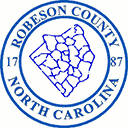The Importance of Getting Connected
go.ncsu.edu/readext?816041
en Español / em Português
El inglés es el idioma de control de esta página. En la medida en que haya algún conflicto entre la traducción al inglés y la traducción, el inglés prevalece.
Al hacer clic en el enlace de traducción se activa un servicio de traducción gratuito para convertir la página al español. Al igual que con cualquier traducción por Internet, la conversión no es sensible al contexto y puede que no traduzca el texto en su significado original. NC State Extension no garantiza la exactitud del texto traducido. Por favor, tenga en cuenta que algunas aplicaciones y/o servicios pueden no funcionar como se espera cuando se traducen.
Português
Inglês é o idioma de controle desta página. Na medida que haja algum conflito entre o texto original em Inglês e a tradução, o Inglês prevalece.
Ao clicar no link de tradução, um serviço gratuito de tradução será ativado para converter a página para o Português. Como em qualquer tradução pela internet, a conversão não é sensivel ao contexto e pode não ocorrer a tradução para o significado orginal. O serviço de Extensão da Carolina do Norte (NC State Extension) não garante a exatidão do texto traduzido. Por favor, observe que algumas funções ou serviços podem não funcionar como esperado após a tradução.
English
English is the controlling language of this page. To the extent there is any conflict between the English text and the translation, English controls.
Clicking on the translation link activates a free translation service to convert the page to Spanish. As with any Internet translation, the conversion is not context-sensitive and may not translate the text to its original meaning. NC State Extension does not guarantee the accuracy of the translated text. Please note that some applications and/or services may not function as expected when translated.
Collapse ▲The last year and a half has been challenging to say the least. The global pandemic has shifted the way many of us work, worship, learn, and even shop. Our normal routines were abruptly changed, forcing entire industries, schools, and churches to pivot in order to meet the needs of their clients, students, or congregations. There have been successes and there have been many failures. As we reflect back, we can all probably think of a time we each struggled to push through to make things happen and the frustration we experienced along the “technological” way.
It may come as a surprise to some, but our agriculture industry is one of many industries in need of good internet connectivity. As an example, my nephew’s laptop has almost become a permanent fixture on our kitchen table at home. “Why?” you ask. He is working as an intern for a leading precision agricultural company based out of Minnesota this summer, covering territory up and down the east coast. He drives all over rural areas to capture drone images of crop fields, providing time-sensitive data for optimizing crop performance for clients. But that’s just the beginning of the task. What follows is the time-consuming uploading of all the high-resolution images that takes hours to complete, even with decent connectivity. Unfortunately, the average internet speed at his house, less than a half a mile away, is only 5-6 megabits per second. Lucky for him, his uncle living on the other side of the swamp has access to a different provider currently delivering speeds up to 200 megabits per second. Imagine how important rural broadband is to a company trying to deliver time-sensitive information to their clients.
American agriculture will continue to see rapid adoption of precision technology in order to remain competitive in a global economy with mounting pressures to do so in sustainable and environmentally friendly ways. Agriculture has changed a lot over the last few decades, and experts claim even more technological advances are on the horizon.
As I write this column, North Carolina Cooperative Extension, Robeson County Center is preparing to participate in a unique Precision Agriculture Field Day in Kinston, NC. Key partners like UNC-Chapel Hill, the United Sates Department of Agriculture, NC State University, and many others are beginning to collaborate to demonstrate the benefits in production agriculture. It is exciting to see major equipment manufacturers, communications technology companies, robotics and broadband experts, and connectivity advocates coming together to support such an important endeavor.
Unfortunately, this pandemic has highlighted the unfair advantage our urban neighbors have when it comes to access of broadband communication. Let’s face it – connectivity to the internet has given businesses and individuals alike a competitive edge in today’s internet dependent society. Fortunately, our elected officials have realized it too because this issue affects their constituents on a grand scale from healthcare, education, and jobs.
Much energy and funding are now being channeled to help address the lack of rural broadband. However, rural residents have an important part to play moving forward. Request are now being made by the Lumber River Council of Governments (LRCOG) in conjunction with its members in Bladen, Hoke, Richmond, Robeson, and Scotland counties for residents to participate in surveys to help identify areas of need. Regardless if you already have access or not, your participation is critical for guiding the process in the most efficient way. By participating in this survey, you will help your county plan for a connected future. You can access the survey at the Lumber River Council of Governments website or by calling 910-618-5533. I encourage you to do your part to build a better tomorrow by participating before August 31.
For more information, please contact Mac Malloy, Extension Field Crop Agent with North Carolina Cooperative Extension, Robeson County Center, at 671-3276, by E-mail at Mac_Malloy@ncsu.edu, or visit our website.




